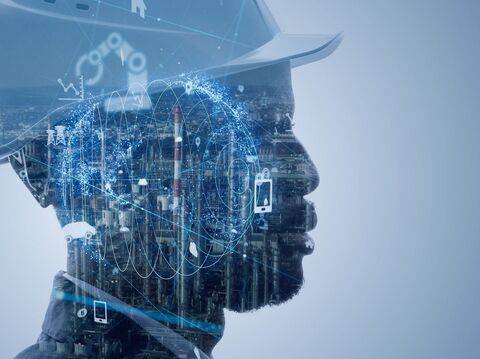Blockchain Basics: The Fundamentals for Developers

Imagine a world where every digital deal, agreement, or record is safe, clear, and cannot be changed. That's what technology promises.
Blockchain is like a digital notebook all interested parties share to facilitate transactions. This makes it very strong and safe.
For software developers across industries, knowing about this advanced tech is essential today. It's not just about digital currencies or money. It's also about making smart contracts or apps that don't need central control.
Read on to learn the basics of blockchain, ranging from its components to the major types.
Defining Blockchain
Blockchain is like a digital string of blocks. Each block has many deals or transactions. Whenever there's a new deal, it's added to a block. When that block gets full, it joins a line of blocks in order.
This line is shared across many computers. This setup is not only spread out but also challenging to breach.
Here’s why it's different:
It's based on something called distributed ledger technology (DLT). This means many copies exist across different computers instead of one person or place keeping all the records.
Everyone with access sees the duplicate up-to-date records stored on the blockchain. To change anything, someone would need to change most of these records at the same time, which is super hard to do.
It started with Bitcoin, making digital money work on its own. They did it without the presence of central authorities. Institutions can use it in many areas to make transactions safe and clear without an intermediary.
Key Components of Blockchain Technology
The key components of blockchain work together towards a common goal: to provide a secure, transparent, and efficient system for digital transactions. Read on to learn their role in technology in detail.
Blocks
Blocks are the storage units in a blockchain. Each block contains transaction data, the time it was made, and a unique code called a hash. When a block is full, it gets linked to the previous block, forming a chain.
Nodes
Nodes are computers connected to the blockchain network. They keep a copy of all the transactions ever made. Nodes check the validity of transactions and blocks, ensuring the integrity and security of the network.
Miners
Miners are special nodes that create new blocks. They solve complex equations to validate transactions and add them to the network. This process, called mining, helps to secure the network and keeps it running smoothly.
Consensus Algorithms
These algorithms are the rules that nodes follow to agree on the state of the network. They ensure that every copy of the blockchain is the same. This agreement process helps to prevent fraud and errors.
Smart Contracts
Smart contracts are self-executing contracts. These have the agreement terms directly written in the code. These contracts automatically execute and enforce the terms of a contract when the required conditions are met. This allows for honest and transparent transactions.
Each component plays a crucial role in maintaining the network's functionality:
- Blocks ensure that data is stored in a secure and chronological manner.
- Nodes maintain the network's integrity by holding a complete copy of the blockchain.
- Miners secure the network by validating new transactions and adding them to the blockchain.
- Consensus algorithms ensure all nodes agree on the network's current state. This helps maintain uniformity and prevent mismatches.
- Smart contracts enable automatic, transparent, and direct transactions between parties without a mediator.
How Does Blockchain Work?
Someone submits a transaction on a blockchain to the network to make a transaction. This transaction joins with others already present into a block. Before this block can join the chain, it needs verification.
Computers across the network compare the transactions against their records. The block is added to the chain if most confirm they are correct.
Miners then compete to validate these transactions with complex calculations. The first to finish adds the block to the chain and receives a reward.
This process ensures that the network is secure and transparent. Changing any part of the chain would require significant computing power. Also, multiple checks by different parties make cheating nearly impossible.
Types of Blockchain Networks
These networks come in three main types: public, private, and consortium.
- Public - These are open to anyone. Public networks allow anyone to join and participate in the network. Bitcoin and Ethereum are examples. They're great for blockchain developers looking for a wide-reaching impact.
- Private – It's perfect for single organizations. They restrict who can join using the technology. This setup is proper for businesses needing privacy and transaction control.
- Consortium - A group of organizations manage and operate these blockchains. They blend aspects of both private and public networks. They're ideal for collaborative projects among different organizations.
Each type offers unique advantages, depending on the application's needs.
Potential Application of Blockchain
Beyond its origin with cryptocurrencies, blockchain technology is also impacting various sectors. Let's dive into some of its key applications and how they're changing the game:
Smart Contracts
These contracts are automatically executed on blockchain platforms when conditions are met. They cut out the middleman in agreements, making transactions faster and cheaper. Industries like real estate and legal are already benefiting from this efficiency.
Decentralized Applications (DApps)
Unlike regular apps, DApps run on a blockchain network. This makes them less prone to censorship and, thus, more secure. Social media, gaming, and finance apps are shifting towards this model for more user control.
Non-Fungible Tokens (NFTs)
NFTs are unique digital tokens that can be bought, sold, or collected. They've transformed the art and entertainment industries. They allow digital ownership of assets like artwork, music, and videos.
Finance
Blockchain introduces secure, swift transactions, reducing fraud and errors. It's perfect for cross-border payments and remittances. Banks and financial institutions are also using it to provide secure financial services.
Supply Chain Management
It provides transparent tracking of goods from origin to consumer. Companies can verify product authenticity and streamline logistics, reducing delays and fraud.
Healthcare
Patient medical records can be securely stored and shared with blockchain. This improves diagnosis, treatment, and confidentiality. Blockchain also aids in drug traceability, ensuring authenticity and safety.
This advanced technology’s applications extend far beyond these examples. It has potential in voting systems, identity verification, digital ledger, and more. This system potentially promises a more transparent, secure, and efficient world.
Challenges and Limitations of Blockchain
While blockchain technology has immense potential, it also has a set of challenges. They are:
- Scalability: As networks grow, they can slow down. This makes it hard for them to handle lots of transactions quickly.
- Energy Consumption: Some networks, like those using proof of work, need a lot of electricity to run. This raises environmental concerns.
- Regulatory Challenges: Laws and regulations around technology are still developing. This uncertainty can make it tough for blockchain projects to move forward.
Getting Started with Blockchain Development
Numerous resources, learning paths, and communities are available for aspiring blockchain developers. These help them kickstart their journey into this innovative technology field. Here's how to get started:
- Resources and Tools: Websites like Ethereum. org and developers' forums offer tutorials and tools for beginners.
- Learning Paths: Online courses like Coursera and Udemy provide structured learning paths.
- Communities and Platforms: One can join development communities on platforms like GitHub, Reddit, or Discord. These can offer support, resources, and collaboration opportunities.
Wrapping Up
We've journeyed through the essentials of blockchain, revealing its power beyond just cryptocurrencies. For developers, grasping these fundamentals isn't just beneficial—it's transformative. The blockchain world is ripe for innovation, from smart contracts to decentralized applications.
Embrace this technology, dive into its depths, and innovate. The future is vast and largely untapped for this technology. By exploring and creating within this space, developers can unlock unprecedented opportunities.
GrowthJockey stands ready to fuel your journey. Our services are designed to meet your unique business challenges. With GrowthJockey, you'll find customized solutions to help your brand reach new heights. We ensure your blockchain application is visionary and viable for your business to grow.
FAQs
1. Is blockchain technology safe for my business?
It is super safe because it spreads data across many computers. This means hackers can't easily mess with it. Also, every deal made is sealed tight with unique codes, making your data even safer.
2. Can I add blockchain to my current business systems?
Yes, you can mix blockchain with what you already have. It might need some tech tweaks and new tools to fit right. However, once done, it can make your system safer and work better without disrupting it.
3. How long does it take to get blockchain going in my business?
Setting up blockchain can vary over time. Small projects might be quick, like a few months. Bigger ones with complex programming languages could take longer, maybe over a year.
It all depends on how big and complicated the plan is. Getting professionals to help can make it smoother.








